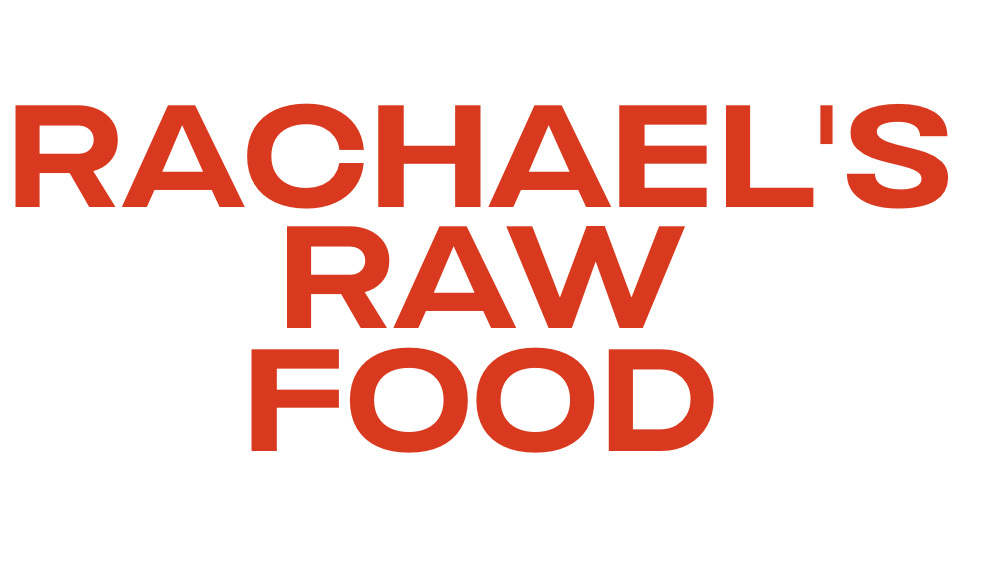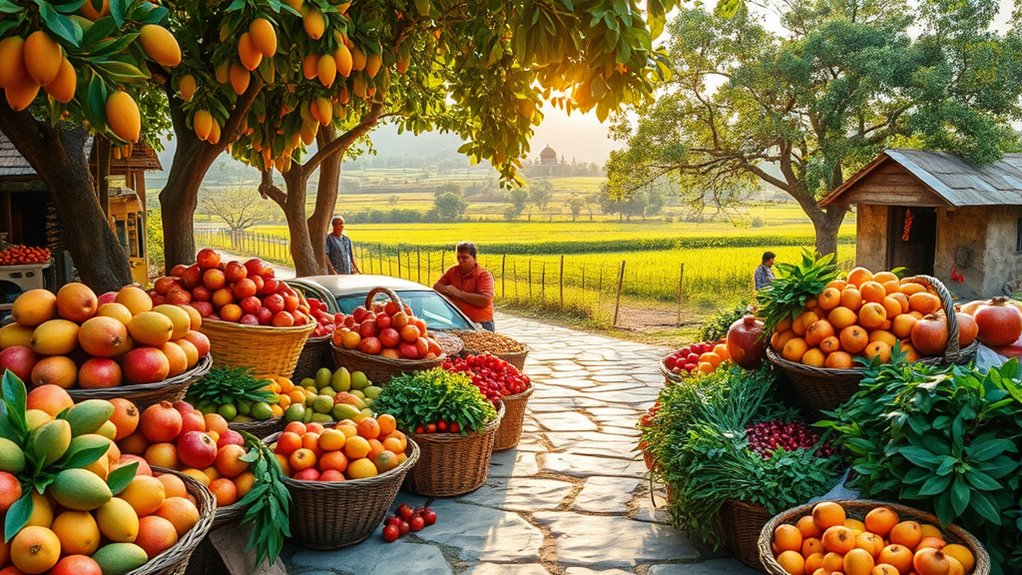On your raw food adventure in India, you’ll explore bustling markets full of fresh, seasonal produce like mangoes, coconuts, and sprouted grains. Visiting farms gives you a firsthand look at sustainable, minimal-interference cultivation. At ashrams and wellness centers, you’ll learn traditional recipes and raw techniques rooted in local herbs and spices. By immersing yourself in this vibrant natural food culture, you’ll discover how raw eating harmonizes with India’s culinary and spiritual heritage—keep exploring for more insights.
Key Takeaways
- Explore local farms to source fresh, organic produce like mangoes, coconuts, and sprouted grains for raw recipes.
- Visit bustling markets for vibrant fruits, vegetables, nuts, and regional herbs ideal for raw food preparation.
- Participate in workshops at ashrams and wellness centers focused on sprouting, fermenting, and raw culinary techniques.
- Immerse in traditional Indian cuisine by adapting recipes that emphasize ingredient purity and minimal processing.
- Engage with farmers and locals to learn about sustainable practices and the cultural significance of unprocessed foods.

India’s vibrant food scene now welcomes raw food enthusiasts who seek fresh, unprocessed flavors. As you explore this diverse country, you’ll quickly notice the rich tapestry of local cuisine, where traditional recipes often highlight fresh, seasonal ingredients. Embracing raw food means diving into a world where the natural essence of fruits, vegetables, nuts, and seeds is celebrated, rather than masked by heavy cooking or artificial additives. In many regions, traditional recipes are rooted in the idea of preserving the purity of ingredients, making them perfect for raw food practices. You’ll find that street vendors and local markets showcase vibrant displays of produce—mangoes, cucumbers, carrots, and coconuts—ready to be transformed into wholesome, nourishing meals.
Traveling through India, you’ll be encouraged to visit farms and local markets, where the freshest ingredients are often harvested just hours before reaching your plate. On farms, you can see firsthand how organic vegetables and fruits are cultivated with minimal interference, aligning perfectly with raw food principles. These visits give you the chance to connect with farmers who prioritize sustainable practices, ensuring that what you consume is as close to its natural state as possible. Markets are bustling hubs of activity, where vendors offer an array of produce, sprouted grains, and dried fruits. Here, you can pick up the ingredients for raw salads, smoothies, or sprouted snacks, all rooted in the local cuisine and traditional recipes passed down through generations.
In addition to farms and markets, you should make time to visit ashrams and wellness centers committed to holistic health. Many of these spiritual retreats emphasize raw food diets as part of their teachings, blending ancient wisdom with modern nutritional insights. At these ashrams, you’ll learn how to prepare raw dishes that honor local flavors and traditions while maintaining their unprocessed integrity. These experiences often include classes on sprouting, fermenting, and creating raw chutneys that highlight regional spices and herbs in their purest form.
Your journey as a raw foodie in India isn’t just about eating; it’s about immersing yourself in a culture that deeply values natural, unprocessed foods. From exploring local cuisine at its source to practicing traditional recipes in a mindful way, you’ll gain a profound appreciation for how India’s culinary heritage can harmonize with a raw food lifestyle. This country’s vibrant markets, farms, and spiritual centers offer endless opportunities to experience food in its most authentic, unadulterated form—something every raw food lover will cherish.
Frequently Asked Questions
How Do Indian Food Customs Influence Raw Food Choices?
Indian food customs greatly influence your raw food choices through cultural dietary restrictions and traditional meal practices. You’ll notice that certain restrictions, like avoiding beef or specific grains, shape what’s available and appealing. Traditional meal practices emphasize balance and harmony, encouraging raw foods like fresh vegetables, fruits, and nuts. These customs guide you to select foods that honor cultural values while embracing a raw, plant-based lifestyle, blending tradition with your health goals.
Are Raw Food Restaurants Widely Available Across India?
Did you know that the number of raw food cafes in India has grown by 25% over the last three years? While they’re more common in urban markets and major cities, raw food cafes aren’t yet widespread across the country. You’ll find them mainly in metropolitan areas, where health-conscious eateries thrive. So, if you’re seeking raw options, explore urban markets first—your best bet for fresh, raw food cafes.
What Safety Tips Are Recommended for Eating Raw in India?
When eating raw in India, prioritize food safety by choosing vendors with good hygiene practices and clean stalls. Always wash fruits and vegetables thoroughly with safe water before consuming. Avoid raw foods from questionable sources to reduce contamination risks. Carry hand sanitizer and use it frequently, especially before eating. Trust your instincts—if something looks or smells off, skip it. Staying vigilant guarantees you enjoy raw foods safely during your trip.
How Do Local Festivals Impact Raw Food Availability?
During festival seasons, you’ll notice market fluctuations that impact raw food availability. Local celebrations often boost demand for fresh produce, making some items scarce or more expensive. You might find seasonal fruits and vegetables in abundance, but others could be limited or harder to find. Staying flexible with your diet and exploring different markets helps you enjoy raw foods despite these fluctuations, ensuring you stay nourished and connected to local traditions.
Can Raw Food Ingredients Be Easily Sourced in Rural Areas?
You might worry raw food ingredients are hard to find in rural areas, but local sourcing actually makes it easier. In these regions, fresh, seasonal produce is abundant at markets and farms, ensuring ingredient freshness. Visiting local markets or directly connecting with farmers helps you access diverse raw ingredients effortlessly, giving your diet a vibrant, authentic taste while supporting the community and maintaining the quality of your raw food experience.
Conclusion
As you explore India’s vibrant farms, bustling markets, and serene ashrams, you realize how deeply connected you’ve become to the land’s natural bounty. Did you know that plant-based diets can reduce your carbon footprint by up to 50%? Embracing raw foods here not only nourishes your body but also supports sustainable living. So, keep tasting, learning, and connecting — India’s raw food journey has just begun for you.










